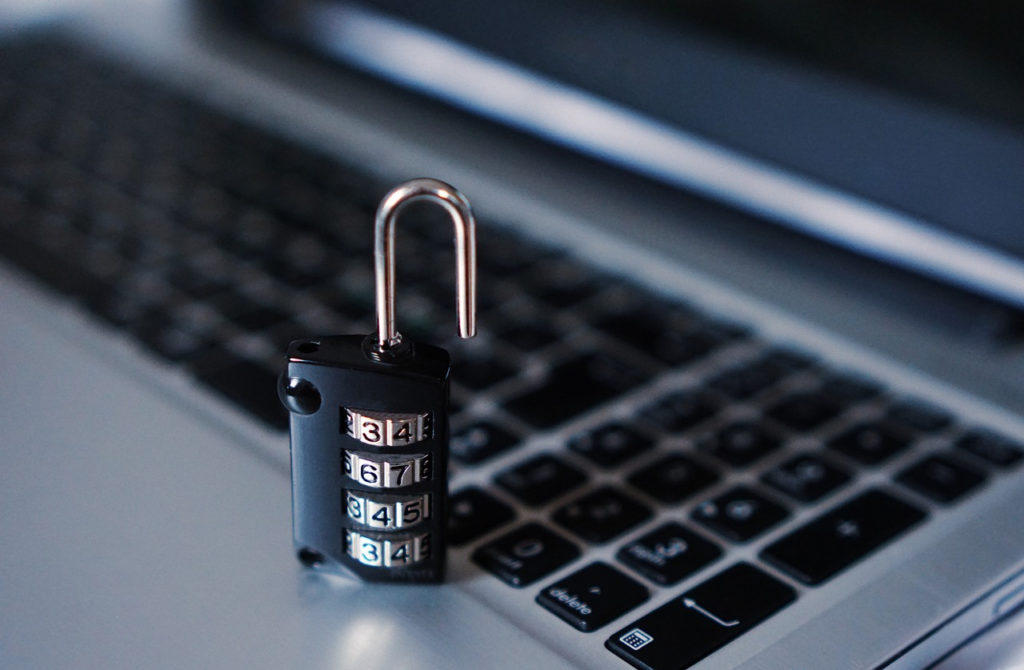Advertisement
In recent years, the rise of remote working has revolutionized the way companies operate. Advanced technologies and global connectivity have made it possible for individuals to carry out their professional tasks from anywhere in the world. However, with this freedom comes a crucial challenge: cyber security.
As more sensitive data is transmitted and stored digitally, protecting this information has become an essential priority for companies and employees.
Advertisement
The Evolution of Remote Working
The evolution of remote working represents a significant shift in the traditional working paradigm. Previously restricted to a physical office environment, the concept of working remotely has gained popularity as technological advances and changes in the expectations of employees and employers have allowed for greater flexibility and mobility.
In the beginning, remote work was mainly associated with independent professions or freelancers who could perform their duties from anywhere, as long as they had access to the internet and the necessary tools. However, with the advance of technology and the growing need for flexibility, companies began to adopt remote working policies for full-time employees. The rise of remote working has been driven by several factors:
Advertisement
Technological advances
The development of online communication and collaboration technologies, such as video conferencing, cloud document sharing and instant messaging applications, has made it possible to collaborate and communicate effectively regardless of physical location.
Globalization
With companies operating in multiple time zones and countries, remote working offers a solution for collaboration between geographically distributed teams, allowing professionals to contribute from anywhere in the world.
Work-life balance
Remote working offers employees greater control over their time and working environment, allowing for a better work-life balance. This can result in greater job satisfaction and productivity.

Responding to Emergency Circumstances
Events such as the COVID-19 pandemic have highlighted the need for flexibility in the workplace. With travel restrictions and quarantines in place, many companies have been forced to adopt remote working as a safety measure to protect the health of their employees.
As remote working becomes more common, companies are facing new challenges and opportunities. The ability to recruit talent globally, reduce infrastructure costs and increase employee satisfaction are just some of the benefits associated with remote working. However, issues related to cyber security, effective collaboration and maintaining organizational culture also require attention and innovative solutions.
The evolution of remote working is fundamentally transforming the way companies operate and how professionals carry out their jobs. By embracing this change and adopting the right technologies and policies, organizations can reap the benefits of remote working while facing the challenges associated with this new way of working.
The Challenges of Cybersecurity in Remote Working
Remote working offers a number of benefits for both employees and companies, but it also brings with it significant challenges in terms of cybersecurity. When employees access corporate systems from outside the company's protected network, this increases the risks of security breaches and the compromise of sensitive data. Below are some of the main cybersecurity challenges of remote working:
Network vulnerabilities
Network vulnerabilities represent one of the biggest cybersecurity concerns in remote working. When employees access corporate systems from outside the company's protected network, they often use their own home networks or public Wi-Fi networks, which are inherently more vulnerable to cyber attacks.
Unsecured home networks
Home networks often don't have the same security features as corporate networks. Home routers can have default settings or weak passwords that are easy to guess, making them easy targets for attackers. In addition, other devices connected to the same network, such as smart or IoT (Internet of Things) devices, can be compromised and used as entry points for attacks.
Lack of monitoring and control
Companies generally have less visibility and control over the activities taking place on home networks compared to their corporate networks. This makes it more difficult to detect and respond to suspicious activity or cyber attacks in real time.
Man-in-the-Middle (MitM) attacks
On public Wi-Fi networks, employees are subject to Man-in-the-Middle attacks, in which an attacker intercepts communications between the user's device and the target server. This can allow the attacker to view, modify or even inject malicious data into the communication, compromising the integrity and confidentiality of the information transmitted.
Reduced effectiveness of corporate firewalls
When employees work remotely, they often bypass corporate firewall protections, which are designed to protect company systems and data. This can leave devices vulnerable to external attacks, as they are no longer protected by firewalls or other corporate security measures.
Network Configuration Risks
In addition, improper network configurations in home environments can expose devices and data to additional risks. For example, sharing the same home network with other family members can increase the attack surface, especially if these members don't follow cyber security best practices.
Phishing threats
Phishing threats represent one of the most common and insidious forms of cyber attacks in the remote working environment. Phishing is a technique used by hackers and cybercriminals to trick users into obtaining confidential information such as passwords, credit card information or corporate data. These attacks are usually conducted via emails, instant messages, phone calls or even social networks.
In the context of remote working, phishing threats become even more dangerous, as employees may be more susceptible to falling for scams due to the absence of robust cybersecurity measures and limited access to technical support.
- Targeted phishing emails: Hackers often send phishing emails posing as legitimate communications from companies, coworkers or online services. These emails can contain malicious links that take users to fake pages designed to steal login information or install malware on users' devices.
- Exploring crisis situations: During times of crisis, such as the COVID-19 pandemic, hackers often take advantage of employees' anxiety and uncertainty to launch phishing attacks. For example, they may send emails pretending to be from health authorities or government organizations, offering false information about the pandemic or promising access to important resources such as face masks or vaccines.
- Impersonation of corporate authorities: Hackers can pose as corporate executives or leaders in phishing emails, requesting confidential information or instructing employees to make money transfers. These "CEO Fraud" attacks can be especially convincing, as employees may be less inclined to question seemingly legitimate requests from higher up in the company.
- Phishing through instant messaging and social networks: In addition to emails, hackers can also use instant messaging and social networks to launch phishing attacks. For example, they can create fake profiles on platforms such as LinkedIn and send messages requesting personal or corporate information.
Unmanaged devices
Unmanaged devices represent one of the most significant cybersecurity concerns in the remote working environment. These devices include personal computers, laptops, smartphones and tablets that are used by employees to access corporate systems and data outside the company's controlled environment. The lack of centralized management of these devices can create significant vulnerabilities, increasing the risk of security breaches and the compromise of sensitive data.
One of the main issues associated with unmanaged devices is the lack of control over security settings and software updates. Many employees may not be aware of the importance of keeping their devices up to date with the latest security fixes and software patches, leaving devices vulnerable to known exploits and malware attacks. In addition, personal devices may not have adequate security software installed, such as antivirus and firewalls, making them easier targets for attackers.
Another challenge related to unmanaged devices is the lack of control over access and user permissions. Employees may share their devices with other people in their homes, such as family members or roommates, increasing the risk of unauthorized access to corporate systems and data. In addition, unmanaged devices can be lost or stolen, putting sensitive data at risk of exposure.
Unauthorized access
Unauthorized access is one of the most serious cybersecurity concerns in the context of remote working. It refers to the ability of unauthorized individuals to gain access to corporate systems, networks or data without legitimate permission. This type of access can result in the theft of confidential information, disruption to business operations and damage to the company's reputation. In the remote working environment, where employees access systems and data from outside the company's protected network, the risk of unauthorized access is significantly increased.
One of the main causes of unauthorized access is a failure to implement adequate access controls. This can occur in a number of ways:
- Weak or compromised passwords: Simple, reused or easily guessable passwords are an invitation to attackers. If an attacker manages to obtain an employee's login credentials, they can access corporate systems and data without being detected.
- Lack of multi-factor authentication (MFA): Multi-factor authentication is an additional layer of security that requires users to provide two or more forms of authentication before accessing systems or data. Without MFA, attackers may find it easier to compromise login credentials and access corporate systems.
- Lack of access monitoring: Without effective monitoring, it is difficult to detect suspicious access patterns or unusual activities. This means that attackers can go undetected while they explore company systems in search of valuable information.
- Excessive privileges: Granting employees excessive access to systems or data can increase the risk of unauthorized access. If an employee has privileges that are not necessary for their job, they may inadvertently expose sensitive information to attackers.
Connection security
Connection security is a critical aspect of cybersecurity in remote working, as it refers to the protection of data as it is transmitted over the internet between employees' devices and corporate systems. In an environment where employees access sensitive systems and information outside the company's controlled environment, ensuring a secure connection is essential to preserve the integrity, confidentiality and availability of corporate data.

One of the main threats to connection security is data interception. On unsecured networks, such as unsecured public or home Wi-Fi networks, transmitted data can be intercepted by attackers, exposing confidential information such as login credentials, financial details or sensitive corporate data. In addition, Man-in-the-Middle (MitM) attacks can compromise the integrity of communication, allowing attackers to modify or inject malicious data during transmission.
Regulatory compliance
Many organizations operate in highly regulated sectors, such as healthcare, finance and government, and are subject to strict data protection laws. Remote working can complicate compliance with these regulations, as sensitive data can be accessed outside the company's controlled environment.
Faced with these challenges, it is crucial that companies adopt proactive measures to protect data and systems in the remote working environment. This can include the implementation of robust security policies, the use of advanced security technologies such as firewalls, antivirus and intrusion detection solutions, as well as regular security awareness training for employees.
By addressing these challenges comprehensively, companies can mitigate the risks associated with remote working and protect their digital assets from cyber threats.
Implement advanced security technologies
The era of remote working has brought numerous benefits, but it also presents significant challenges in terms of cyber security. Protecting sensitive data in a digital world requires a proactive, multi-faceted approach that includes the implementation of advanced security technologies and the adoption of conscientious cybersecurity practices by all users.
By prioritizing cybersecurity and adopting proactive measures to protect data in remote working environments, companies can mitigate the risks associated with transmitting and storing sensitive information online, guaranteeing the integrity, confidentiality and availability of data in a constantly evolving digital world.
See also: 10 apps to password-protect your apps and ensure more privacy
March 29, 2024

She has a degree in Languages - Portuguese/English, and is the creator of the Escritora de Sucesso website. As a writer, she seeks to expand everyone's knowledge with relevant information on various subjects. At SoMuchToSayToday, she brings news and content ranging from entertainment to the country's economic situation.


